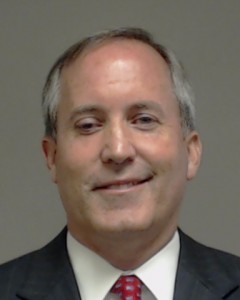“One of the cores of democracy is neighborhood trust. You need to trust others in your society and in your community for democracy to work. Period. When there’s a very high level of distrust, you will see a fracturing of community.”
“So there you have it. Banks charge higher swipe fees for reward cards—mostly paid by merchants—and then rebate that money in the form of rewards mostly paid to customers who are middle class and above. The net result is that richer, more sophisticated cardholders end up paying less than poorer, less sophisticated cardholders. And that’s before we even get to the higher interest rates they’re charged on unpaid balances, which is at least notionally justifiable.”
“The Disney Parks have seen better days. What was once a desirable, affordable vacation for some American middle class families has devolved into something prohibitively expensive and stressful. Every aspect of the Disney experience must be premeditated and scheduled to maximize its declining worth. But despite the backlash, the problem isn’t getting better.”
“Google is funneling revenue to some of the web’s most prolific purveyors of false information in Europe, Latin America and Africa, a ProPublica investigation has found. The company has publicly committed to fighting disinformation around the world, but a ProPublica analysis, the first ever conducted at this scale, documented how Google’s sprawling automated digital ad operation placed ads from major brands on global websites that spread false claims on such topics as vaccines, COVID-19, climate change and elections.”
I guess Tony Blair won’t be watching the latest season of The Crown.
It’s How Elon Is Screwing Up Twitter all the way down, isn’t it?
“Even if Trump never again holds public office, his anti-statist conspiratorial politics dominate contemporary Republicanism. This is bad news not just for public employees who have become targets in an increasingly scary culture war. It’s bad for the rest of us, too, because the services public employees provide will decline in quality. As loyalty to the regime becomes the key criterion for hiring, it will grow harder to attract good people into government.”
RIP, Leslie Phillips, British actor who was the voice of the Sorting Hat in the Harry Potter movies.
“The tale goes something like this: Some notable Twitter advertisers have paused their expenditures with the site. General Motors, General Mills, and Audi are some of them. But contrary to Musk’s version of events, the problem is less that leftists are bullying the company that makes Cheerios and more that Musk is not as good at business as he thinks he is. Advertisers don’t like to run their ads in places where they might appear alongside abuse, harassment, spam, racism, misogyny, slurs, and the like.”
“Musk’s fans see the billionaire as a visionary, but it’s worth noting that many casual observers—people whose only real understanding of Musk is as the guy who put the fancy electric cars on their streets—have also internalized the heuristic that he is Good at Business and the type of man who spends his waking moments dreaming of how to save humanity from its existential problems. But what the past two weeks demonstrate is that Musk is, at best, a mediocre executive—and undoubtedly a terrible, distracted manager.”
“While many of Musk’s detractors may hope the platform goes through the equivalent of thermonuclear destruction, the collapse of something like Twitter happens gradually. For those who know, gradual breakdowns are a sign of concern that a larger crash could be imminent. And that’s what’s happening now.”
“Want to know whether the charity organization, celebrity, political figure, reporter, or corporation you’re following on Twitter is the real one or an imitation identity meant to deceive you? There won’t be one. It appears there won’t be a way for Twitter itself to differentiate between the real and fraudulent accounts, either. There’s little chance that’s a salvageable situation, when it comes to the FTC consent agreement Twitter is required to follow. What turns this into a potential multi-billion dollar catastrophe is the strong suggestion, from Musk, that his own actions are intended to allow Twitter to financially profit from fraudulent user behavior.”
“But Musk should be afraid of the FTC, for no other reason than that the agency can fine Twitter literally billions of dollars—and Musk’s own message to employees this week suggests that the company is already in significant financial trouble. So rockets notwithstanding, Musk should tread cautiously with the FTC. The rest of us should tread cautiously with turning over sensitive information (like, say, credit card numbers or bank account information) to Twitter at a moment when the company seems more insecure than ever.”
(Yes, I know, it’s another Musk-and-Twitter-palooza. What can I say, I’m having fun. I promise I’ll eventually stop.)
The Speaker math for Kevin McCarthy could be very dicey if the Republicans do win the House.
“Kentuckians voted down an anti-abortion proposal that would have amended the state constitution so that it does not protect the right to an abortion, Decision Desk HQ projects. It is now the second conservative state this year to reject such a proposal.”
“I heard from women who spent the entire summer post carding and phone banking and registering voters, post Dobbs, and most of them never doubted for a moment that they were invisible to pollsters and pundits and journalism as it is currently practiced. The spiraling story about who cared about what didn’t stop them. Bless them, every one.”
RIP, Harold Cook, longtime and well-loved Democratic strategist, pundit, blogger, storyteller, and all around good guy. I got to hang with him once in person but engaged with him online for years. He was a hoot and a mensch and will be greatly missed. I commend you to read Rachel Truair’s eulogy as well.
“If Mitch McConnell Is Still in the Minority It’s His Own Damn Fault“.
“State legislative races are on pace to be the highlight of the Democratic ballot. If Democrats hold on to Nevada, this will be the first time the party in power hasn’t lost a single chamber in the midterms since 1934, according to the Democratic Legislative Campaign Committee.”
“Alex Jones ordered to pay an additional $473 million to Sandy Hook families“. This is all good, but I would like to see some actual money get taken away from him. It’s just headlines and things he can continue to thumb his nose at until he is made to feel the pain.
RIP, Gallagher, prop comedian known for smashing watermelons as part of his act. Mark Evanier has a cool Gallagher story to tell.
And just like that, after a week that can’t even be described as chaotic because that doesn’t begin to capture it, RIP, Twitter Blue. We’ll always have the mocking tweets.





















